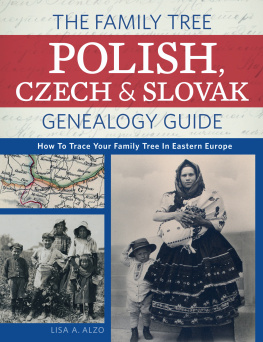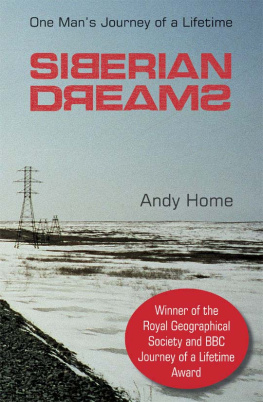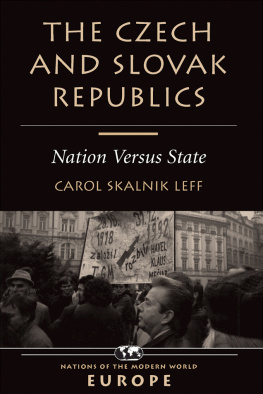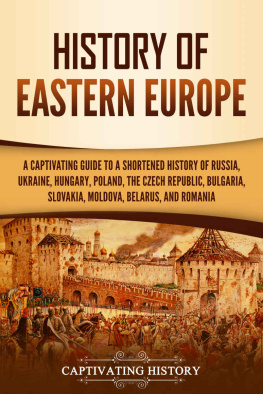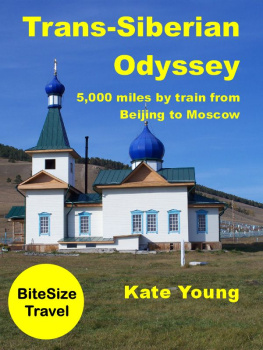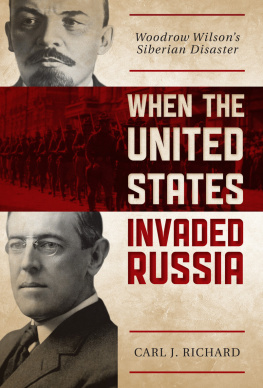

Copyright 2016 Kevin J. McNamara
Published in the United States by PublicAffairs,
a Member of the Perseus Books Group
All rights reserved.
Printed in the United States of America.
No part of this book may be reproduced in any manner whatsoever without written permission except in the case of brief quotations embodied in critical articles and reviews. For information, address PublicAffairs, 250 West 57th Street, 15th Floor, New York, NY 10107.
PublicAffairs books are available at special discounts for bulk purchases in the U.S. by corporations, institutions, and other organizations. For more information, please contact the Special Markets Department at the Perseus Books Group, 2300 Chestnut Street, Suite 200, Philadelphia, PA 19103, call (800) 810-4145, ext. 5000, or e-mail .
Book Design by Timm Bryson
Map Design by Mike Morgenfeld
The Library of Congress control number is 2016930908
ISBN 978-1-61039-485-7 (EB)
First Edition
10 9 8 7 6 5 4 3 2 1
TO KATRINA
Whose love, patience, and understanding make all things possible
CONTENTS
Life is warfare, and the sojourn of the stranger in a strange land.
MARCUS AURELIUS
Meditations II
I WISH TO acknowledge the assistance and support of Max Boot, Richard Immerman, John Lehman, and Richard Pipes, all of whom encouraged and assisted me in this project. A big thanks to Neal Orkin, who brought to my attention the five-volume work Cestami odboje: Jak ily a kudy thly s. legie (The Road to Resistance: How the Czech Legion Lived and Fought) that was published in Prague in the 1920s. Thanks also to Alan H. Luxenberg, president of the Foreign Policy Research Institute, for his enthusiasm, as well as to the generosity of the Earhart and Tawani Foundations, all of which was absolutely decisive in making this project possible.
I owe a special debt to the late Russell F. Weigley, the scholar and teacher who introduced me to the subject of military history. Ivo Reznicek, the nephew of a legionnaire, agreed to render the stories of the legionnaires into English, settling accounts for the scolding he received as a boy in communist Czecho-Slovakia, where he was reprimanded by his teacher for speaking in class of his uncles exploits in the Czecho-Slovak Legion. The staffs at the Immigration History Research Center Archives at the University of Minnesota, the special collections library of the Historical Society of Pennsylvania, the National Czech and Slovak Museum & Library, and the Vancouver Public Library were helpful. Many thanks also to Anne Applebaum, Mary Andrejka, Andrew Bultas, Edward Chlanda, Robert Faltin, Stella Gabuzda, Arlene Gardiner, Elinor Gay, George E. Glos, George Hanc, John Hanc, Penny Heger, Tomas Jakl, Frank Kaderabek, Mary Kaderabek, Sarah Kaderabek, Radomir Luza, Jerry Machalek, Paul Makousky, Joan McGuire Mohr, Lukas Pavlicek, Daniel Pipes, Helen Rappaport, Miloslav Rechcigl Jr., Sandra Scott, Jim Stroner, Ivan Vilimek, and Milos Zika. An especially large debt is owed to my wife, Katrina, and my daughters, Hilary, Whitney, and Julia, for their patience and understanding during this long trek, which consumed many more years than the legions epic journey.
WORLD WAR I and the Russian Revolution remain the two most significant events of the twentieth century and the little-known story told in these pages had significant impacts on both of them. We know that the war originated in Sarajevo, now the capital of independent Bosnia-Herzegovina, but the conflict also had much greater consequences in Eastern Europe and Russia than it did in the West. While the Western Fronts near-limitless casualties were personally horrific and socially traumatic, the combatant nations survived. Indeed, these battles are often quizzically recalled for their waste of human life in an otherwise inconsequential exercise of power.
The war in the east was far more consequential, casting adrift multinational empires, ancient dynasties, and entire societies amidst the collapse of four regimesAustro-Hungarian, German, Ottoman, and Russianthat governed much of the earth. Governments were deposed, new nations created, old ones destroyed, dictatorships and democracies founded, the map of Europe redrawn, and the twentieth century forever altered. And while peace finally dawned in the west on November 11, 1918, war-borne conflicts continued to roil Russia, Eastern and Central Europe, the Balkans, the Caucasus, and especially the Middle East. Conflicts continue today in all these places.
Wars crippling consequences ushered in the Russian Revolution, giving birth to a regime that would lead to a decades-long global cold war that divided Europe, east from west. When communist rule collapsed in 1991, more than half a dozen European states were liberated from Moscows grip, and the Soviet Union imploded into another fifteen smaller national units. German anger at losing the Great War prepared the ground for World War II and the Holocaust. The collapse of the Ottoman Empire left behind many states throughout the Balkans, the Caucasus, and the Middle East that still struggle to establish stable governments and mutual peace. Austria-Hungarys collapse gave birth to Czecho-Slovakia, Poland, and Yugoslavia, which served as trip wires and hostages for hot and cold wars. Azerbaijan, Czecho-Slovakia, Georgia, Moldova, Ukraine, and Yugoslavia have splintered into smaller units, and conflicts continue to simmer today in places like Bosnia, Crimea, Georgia, Kosovo, Moldova, Nagorno-Karabakh, and Ukraine.
ALMOST ONE HUNDRED years later, the epic tale of the Czecho-Slovak Legion recounted in these pages remains little known in part because it became lost between the lines of the multiple histories of a tumultuous time. The story remained obscured because it played out in Eastern Europe, Russia, and Siberia, lands that even today lay just beyond the borders of Western curiosity. In the West, World War I recalls mostly the Western Front; the Eastern Front is much less known, characterized by Winston Churchill as the unknown war.
After 1938, the story behind the founding of Czecho-Slovakia was overtly suppressed after Nazi Germany occupied the small nation, where anti-German sentiment had for centuries walked hand in hand with Czech nationalism. It was suppressed again after 1948, when Czecho-Slovakia became a Soviet satellite. Pragues new Russian occupiers buried the memory of the armed founders of Czecho-Slovakia, who had audaciously fought andalbeit brieflydefeated the Red Army, threatening the very survival of the Russian Revolution. It was not until 1991, when the communist regimes of Russia and Eastern Europe collapsed, that original source material surfaced.
Yet another reason this story remains little known is that the views of the men at the center of it were largely ignored. The firsthand accounts of the Czech and Slovak legionnaires that have surfaced shed light on their personal motivations, assumptions, opinions, fears, and ambitions. These accounts reveal new aspects of the story, different from those previously ascribed to the participants by historians whomuch like the Habsburgstreated them as mere objects. For too long, the legionnaires themselves were less important than what politicians, generals, diplomats, historians, and journalists wished to make of them.
This is the first English-language book to make extensive use of collections of eyewitness testimony in a history of this episode. In my research, I arranged to have more than one hundred long-neglected personal accounts by the legionnaires translated into English for the first time from a five-volume work,
Next page

